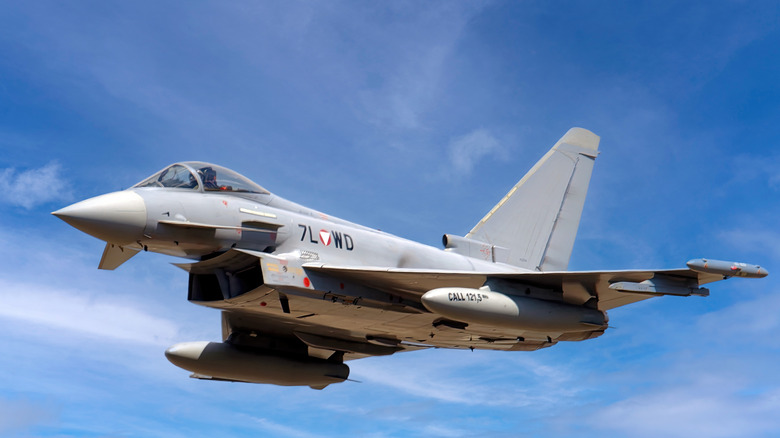Eurofighter Typhoon Top Speed: How Fast Is The Supersonic Fighter?
The Eurofighter Typhoon is a twin-engine, multirole fighter with many strengths and weaknesses. One of its strengths is its ability to fly two times the speed of sound at altitude, exceeding that of the more advanced F-35 and keeping up with the F-22 Raptor. When flying at sea level, however, it's only going to get to Mach 1.25 since there's more air resistance at lower altitudes. Its 8-second acceleration rate is another remarkable aspect, letting the fighter jet get up in the air in a hurry when necessary, while its aerodynamics are improved by its canards, the small wings near the nose.
Airbus, BAE Systems, and Leonardo worked together to build this speedy, aerodynamic interceptor, but it was EUROJET Turbo GmbH responsible for the engines that let the Eurofighter reach its high speeds. EUROJET Turbo GmbH is a consortium of European companies, including Rolls-Royce, MTU, Avio Aero, and ITP Aero. The Eurofighter's twin engines are two EJ200s, a turbofan engine with an afterburner. When not using the afterburner, the engines kick out 13,500 pounds of force, but with it engaged it pushes out 20,000.
The engine is of a modular design, coming with 15 interchangeable modules, making the upgrade process simpler. MTU is the company that devised compressor stages with blade integrated disks (blisk), a process that commercial airline engines use now. Paired with a low overall weight, the engines give the Typhoon a high thrust-to-weight ratio.
The Eurofighter has a 5th-gen engine in a 4th-gen fighter jet
The Eurofighter Typhoon isn't considered a fifth-generation fighter jet since it lacks stealth capabilities, but it does join a short list of fighter jets in service capable of the unique supercruise feature. This ability lets fighter jets travel at supersonic speeds without engaging their afterburners. If you should know anything about afterburners, it's that they burn through fuel faster than a teenager burns through money when they have a credit card. Sure, going faster will get the pilot to their destination faster, but it's going to significantly decrease the jet's combat radius. The Typhoon can get up to Mach 1.5 without its afterburners.
The EJ200 engine also provides the fighter with improved maneuverability thanks to its thrust vectoring control. This means that the engine outlet can pivot and control the angle of its thrust. With this feature, the Typhoon's pilot can make faster, tighter turns. This isn't something the pilot has to do consciously, either. It's all automated with the computer system handling the math and components involved.
The Typhoon can fly roughly 1,800 miles before refueling. Of course that depends on use of the afterburner and payload weight. It's an impressive fighter jet used by NATO, various European nations, and the Middle East.

